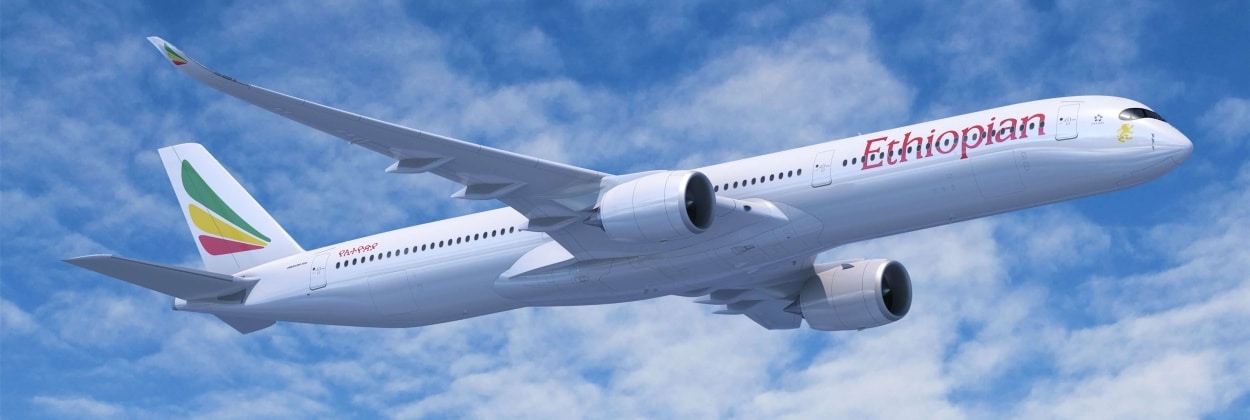Aerospace
Ethiopian Airlines orders Africa’s first A350-1000
The largest airline company in Africa, Ethiopian Airlines Group, has upgraded four of its A350-900 orders to the A350-1000, the largest model in the A350 Family

The largest airline company in Africa, Ethiopian Airlines Group, has upgraded four of its A350-900 orders to the A350-1000, the largest model in the A350 Family, making it the continent’s first user of the aircraft.22 A350-900s have previously been ordered by Ethiopian Airlines, 16 of which have already been delivered. Ethiopian Airlines now has a backlog of four A350-1000s and two A350-900s with the A350-1000 upsizing.
Ethiopian Airlines
By launching the A350-1000, the largest model of the world’s most effective and technologically advanced passenger aircraft. Ethiopian Airlines is once again setting a standard in Africa’s aviation industry, remarked by Mikail Houari, president of Airbus Africa and the Middle East.
A350-1000 to its fleet of modern wide-body aircraft
The A350-900 has offered unparalleled operational flexibility and efficiency, from short to ultra-long range operations, combined with remarkable capability, fuel efficiency, and operational reliability of 99.5 percent .By adding the A350-1000 to its fleet of modern wide-body aircraft, the East African carrier will increase its capacity. The airline will benefit from a versatile, highly advantageous Family that makes use of Airbus’ excellent degree of commonality and same type rating.
Modern aerodynamics, a fuselage and wings made of carbon fibre, as well as the most fuel-efficient Rolls-Royce Trent XWB engines, are all part of the Airbus A350’s brand-new, original design. By combining these advanced technologies, Ethiopian Airlines achieves incredible levels of operational effectiveness and sustainability, with a 25% reduction in fuel consumption and CO2 emissions compared to twin-aisle aircraft of earlier generations.
940 orders from 52 customers were placed on the A350 Family by the end of June 2022, making it the standard large wide body family for the ensuing decades.

Aerospace
When Ratan Tata was denied entry to the airfield at the Aero India show, he waited

During our visit to Aero India 2019, we had the unexpected opportunity to see Ratan Tata at the event, which was a thrilling moment for us. However, there was a surprising hiccup when the security staff didn’t allow him to enter due to a lack of a security pass.
Despite this, he remained calm and patiently waited for about 20 minutes until a member of the Tata team brought him the required pass, after which he calmly proceeded inside. It was a humbling sight, showcasing his composed demeanor even in such situations.
Ratan Tata ji is not only a renowned industrialist but also a trained pilot, holding a pilot’s license. In 2007, he became the first Indian civilian to fly the F-16 Falcon during the Aero India show in Bangalore—a proud moment for the nation.
His passion for aviation extended beyond flying, as he played a key role in shaping India’s aerospace industry. Under his leadership, Tata ventured into manufacturing and maintaining aerospace components while upholding its legacy of quality. Notably, Tata’s collaboration with Airbus to develop and manufacture the C295 aircraft is a testament to its growing influence in the sector.
-

 Aviation2 months ago
Aviation2 months agoMicrosoft Flight Simulator Raises $3 Million to Bring Back the An-225 Mriya
-

 Airlines2 months ago
Airlines2 months agoQatar Citizens Can Travel to the United States Without a Visa
-

 Aviation2 months ago
Aviation2 months agoQatar Airways bans these new Electronic Devices on plane
-

 Airlines2 months ago
Airlines2 months agoJapan Airlines Rolls Out Free Domestic Flights to International Passengers
-

 Defence2 months ago
Defence2 months agoWhich Country Has the Largest Fleet of Fighter Aircraft?
-

 Airport2 months ago
Airport2 months agoWestern Sydney Airport Welcomes Its First Plane After 6 Years of construction
-

 Airlines4 days ago
Airlines4 days agoDAMAC Air: Dubai’s New Luxury Airline Offers Free Flights for Registration
-

 Aviation2 months ago
Aviation2 months agoDid you know ? Once Boeing 747 carried 1088 passenger in 1991








